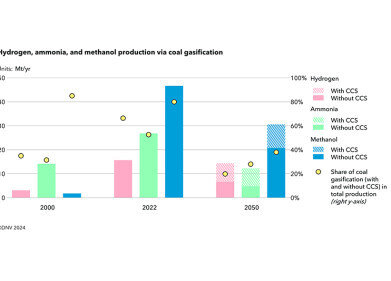-
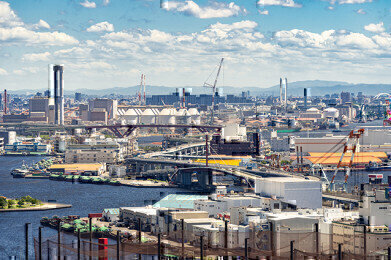 Kobe harbour, Japan
Kobe harbour, Japan -
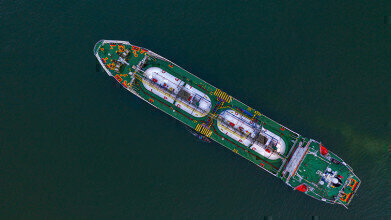 Ocean going shipment of LNG
Ocean going shipment of LNG -
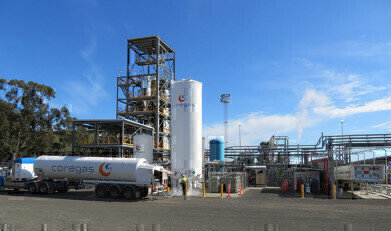 HSEC J-Power coal gasification plant
HSEC J-Power coal gasification plant -
.jpg) J-Power coal gasificaiton plant at Latrobe velley
J-Power coal gasificaiton plant at Latrobe velley -
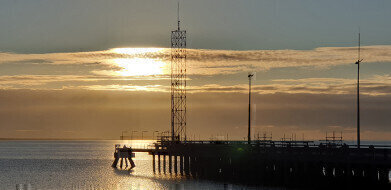 Hydrogen pier at Port of Hastings Copyright HESC Project Partners
Hydrogen pier at Port of Hastings Copyright HESC Project Partners -
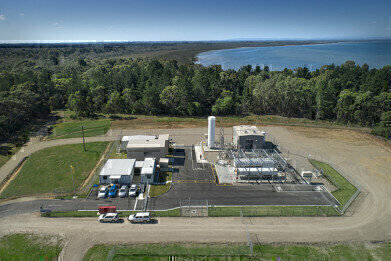 HESC Hastings Hydrogen Liquefier, Copyright of HESC project partners
HESC Hastings Hydrogen Liquefier, Copyright of HESC project partners
Green Energy
HySTRA – international shipping of liquid hydrogen
Nov 25 2020
Author credit: Stephen B. Harrison & Daniel W. Harker, sbh4 GmbH
Enabling the vision of liquid hydrogen shipping and trade
To complete the hydrogen energy supply chain, in recent years businesses have begun to investigate how liquid hydrogen (LH2) can be transported long distances to areas of demand overseas, in a safe and cost-effective manner. The world’s first liquified hydrogen international shipping project, HySTRA will directly address this, with the first liquid hydrogen shipment from Australia to Japan expected in the first half of 2021.
It has already been demonstrated that green hydrogen can be produced on an industrial scale, so this project is increasing the overall confidence that green hydrogen can also become an internationally traded commodity.
The future of liquid hydrogen distribution
As of 2014, around 3,500,000km of pipeline in 120 countries around the world were used for natural gas transportation and several of these pipelines may be adapted for use with hydrogen, with the H21 Leeds City Gate and the HyNet North West projects in the UK planning to use existing natural gas infrastructure to pipe hydrogen or a hydrogen methane gas mixture fuel into homes.
Natural gas accounts for a huge proportion of the world’s energy demand because it is cleaner and more flexible than alternative fossil fuels such as coal and petroleum. As this commodity moved onto the international stage the production and distribution of liquified natural gas (LNG) became an essential link between energy-producing nations and energy consumers.
HySTRA will demonstrate the feasibility to distribute pure hydrogen on a large scale over long distances, as LNG is shipped today.
The Susio Frontier utilises cutting edge cryogenic technology
The project will see liquid hydrogen being shipped 9000km from southeast Australia to the Japanese city of Kobe, via a specially designed vessel named ‘The Suiso Frontier’. This ship was launched in December 2019 and is currently in the Kobe dockyard.
The equipment surrounding the cryogenic storage vessel will be manufactured and installed by SAACKE Marine Systems. The Vessel contains a vacuum-insulated liquid hydrogen storage tank allowing for 1,250 cubic meters of liquid hydrogen at -253℃ to be transported and will be manufactured by Harima.
Coregas plays a lead role in HySTRA
Hydrogen gas for the HySTRA project will be manufactured at a gasification pilot plant operated by J-Power at the Latrobe Valley in Victora, Australia. Gasification involves reacting brown coal with oxygen at a high temperature and pressure to produce Syngas (consisting of carbon dioxide, carbon monoxide, and hydrogen), which is further purified to yield the desired hydrogen. This ultimately results in a high purity, low-cost hydrogen gas which can then be cryogenically cooled to -253℃ and liquefied to form LH2 for efficient transportation.
Coregas (who have 44 years of experience in the industry) are playing a central role in HySTRA. In the hydrogen production process, they supply bulk liquid oxygen for use on the coal gasification plant in the Latrobe Valley. Coregas is also responsible for the purification, compression, and distribution of the hydrogen from the gasifier to the hydrogen liquefier.
Alongside their role in HySTRA, Coregas is involved in several hydrogen projects. Alan Watkins, executive general manager at Coregas commented that “in recent decades, and with our involvement in ground-breaking projects such as HySTRA, we have become an important supplier to Australian industry. With our emphasis on safety and innovative thinking, we deliver highly focused, risk-managed change that reduces the financial and resource burden on Australian industries.”
Decarbonising hydrogen production
The ‘brown’ hydrogen produced in this gasification process is generated from brown coal, which is abundant in the region, however, this production method releases carbon dioxide. When the HySTRA pilot project is complete, a full-scale gasification plant incorporating carbon capture and storage (CCS) will be utilised to produce low-carbon hydrogen, resulting in a more sustainable operation.
As interest in hydrogen energy increases, the hydrogen production element of the HySTRA supply chain may be converted to using green hydrogen, by coupling renewable solar or wind power with an electrolyser, which in turn produces green hydrogen.
Watkins concludes that “before hydrogen can become a crucial part of modern society at scale, a successful pilot project, such as HySTRA is required, to provide evidence that hydrogen is just as safe and convenient to distribute over the oceans as traditional fossil fuels such as LNG or crude oil”.
Vital link for energy supply chains to North Asia
HySTRA is an AUD500 million project which has received support from the Japanese government, the Australian Federal and Victorian State Governments. This project is paving the way for future energy supply chains, as Japan currently imports more than 90% of its energy from fossil fuels and is actively looking for more sustainable solutions. Australia is firmly establishing itself as a key player in the emerging hydrogen economy, with strong commercial ties with major energy importers such as Japan.
Events
May 05 2024 Seville, Spain
May 13 2024 Munich, Germany
May 23 2024 Beijing, China
May 23 2024 Beijing, China
Jun 10 2024 Algiers, Algeria
